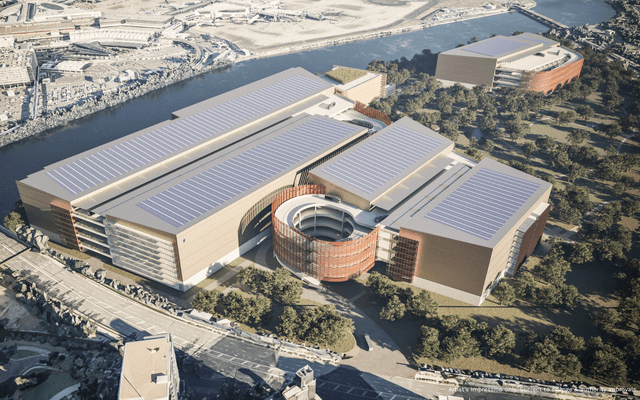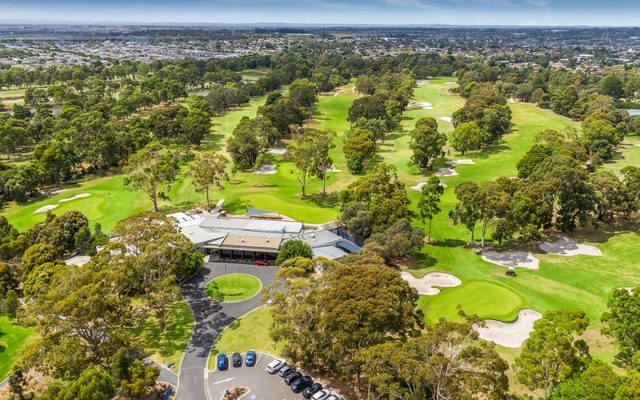This article is from the Australian Property Journal archive
MELBOURNE’S golf courses are sitting on billions of dollars’ worth of developable land, and large swathes could be unlocked in the near future as clubs start to feel the pinch of dwindling patronage.
However, the redevelopment of golf course sites for housing has proven to be a difficult task on both public and privately-held land.
Savills estimates the 130 acres of General Residential-zoned land occupied by the Riversdale Golf Club at Mount Waverley could be worth upwards of $300 million; and the 143 acres occupied by the Victoria Golf Club in Cheltenham, also zoned General Residential, could be valued at more than $400 million.
Brighton Public Golf Course, meanwhile, is on 85 acres that is worth a speculated $250 million if rezoned for residential development.
According to Savills, changing demographics and levels of player participation have created an industry in which more than half of all private Victorian golf clubs are in financial stress.
Metropolitan land values continue to rise and golf courses occupy huge areas of residentially zoned land, often in established locations.
Clinton Baxter, Savills Victoria state director – CBD & metropolitan sales, envisages numerous golf courses will opt to sell their landholdings for huge windfalls to compensate for dwindling revenues and rising operating costs.
“Melbourne’s golf courses are an incredible source of land wealth, making them susceptible to closure and redevelopment,” he said.
“Without the proper planning framework in place, the potential loss of local amenity, open space, and opportunity for long-term public benefit is very real.
“At some point, the value of the land for a single-use sport with limited players must put pressure on the sustainability of the club.”
Changes to the golfing industry and nearly $300 million worth of courses changing hands in less than three years prompted the Victorian state government to prepare its 2017 Planning for Golf in Victoria discussion paper, which cited the urgency of the issue in light of population pressures and escalating land values.
Clubs that have already decided to to sell up include The Eastern Golf Club in Doncaster, for $100 million to Mirvac in 2011 before relocating to Yering in the Yarra Valley; as well as Kingswood in Dingley, Croydon Golf Club to Australand in Croydon, and Kingston Links in Rowville for $60 million.
Baxter said each of the sales were the result of pressure from developers and declining memberships.
Kingston Council last month voted down a rezoning application for the Kingswood golf course lodged by superannuation giant ISPT, which purchased the site for around $125 million in 2014 and applied for a rezoning from Special Use to Residential rezoning intentions to build more than 750 homes on the site.
To the west, Bayside Council last year rejected plans to create an urban forest and wetlands in Elsternwick Park – which includes the now-former Elsternwick golf course site in its northern section – but locals continued to push for the broader area to be converted into a public recreation space, which proved to be successful.
Despite having two five-year options to continue its lease over the Elsternwick course, operator Leisure Management Services had announced in April that it would not take them up, saying the course has had “many challenges in recent years with falling patronage and costly long-term maintenance issues rendering the site financially unviable”.
Bayside Council recently opted to reactivate a football oval and build new facilities at Elsternwick Park south, which prompted further community backlash and the strong local support for public use of the area prevented another oval from reactivation. The site is adjacent to the current Elsternwick Park football and cricket ground, where the influential Victorian Amateur Football Association is headquartered.
Also in the bayside region, Sandringham’s golf course will be slimmed down.
Baxter said Savills had recently sold a 38-acre former orchard in Wantirna South in Melbourne’s east for almost $100 million, adding that “almost all of Melbourne’s golf course landholdings are far larger, better located, and vastly more valuable – developers would be chomping at the bit to access such sites and develop them for high-density housing”.
He raised the question of whether the Victorian planning minister and related authorities should pre-empt a transition in the sport of golf, and step in and rezone private golf courses for public use, in order to prevent Melbourne’s suburbs from losing their parks and green areas.
“There is an opportunity for planning authorities to get the right balance of public use and residential-zoned land before a major potential sell-up of golf courses takes place,” he said.
Australian Property Journal




